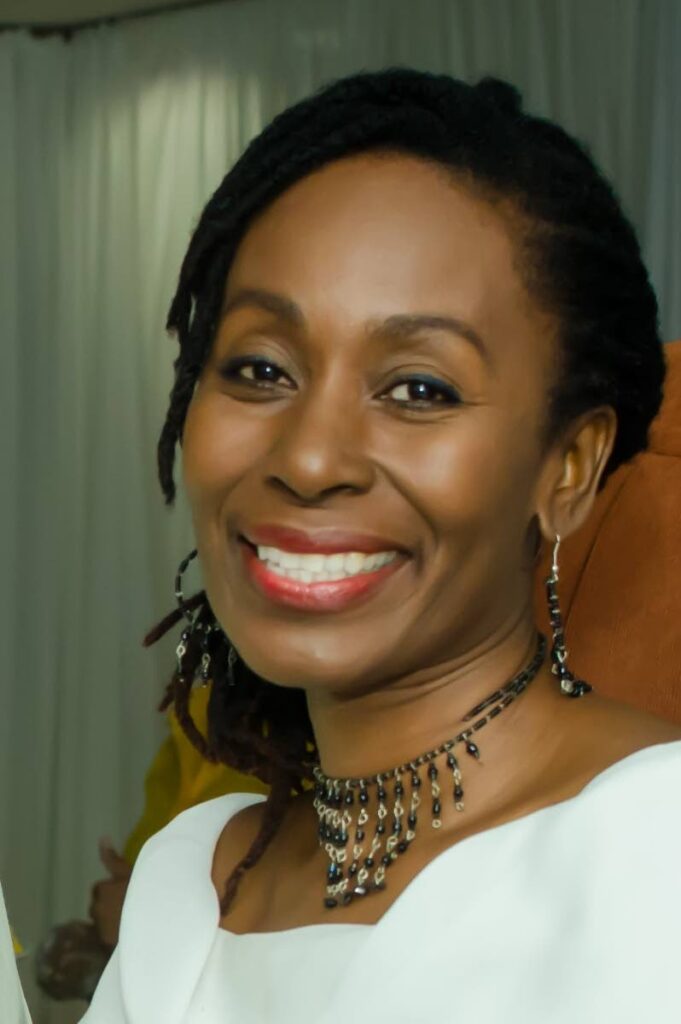Ancestors in the mas

Culture Matters
TT Culture, Inside Out
DARA E HEALY
SOMETIMES, the mas is still.
Like just before 4 am as people gather in the jumbie hour, waiting for that subtle change in the morning air; the signal that it is time to move off. Sometimes, even the panyard is still, between rehearsal sets, when players satisfy their thirst and talk quietly in groups scattered about the yard. They talk and wait for the sound of the pan stick on the side of the tenor pan telling them, “Break over, time to rehearse.”
Increasingly, we need more moments of stillness. Amidst the snarling faces in the media, images of war, abuse, corruption and loss – as our levels of anxiety increase, is it possible to discover healing in the ancestral elements of our mas?
In the face of death, many cultures seek solace from those who have transitioned from this realm. Their rituals reflect the understanding that “…the relationship with the deceased may be transformed by the ritual actions of mourners, into an ancestor.” In some traditions, this process of transformation must take place within the context of a festival, or according to the rites of passage in Carnival.
In Yoruba, the word for masquerade is
egungun. The
egungun are portrayed by fully masked men (or in some cases women) “who represent the spirits of the living dead ancestors.” Over the years, in TT the word egungun became synonymous with ancestor. Prof Jeff Henry and other researchers document that the
egungun were most likely prominent members of ancient African secret societies that survived the Middle Passage.
As with most aspects of African culture, the ancestral masquerade survived through subterfuge, hiding in plain sight, by incorporating very subtle markings and objects in their clothing during the Carnival celebrations. During the early Carnivals, they would be fully masked, dressed in several layers of fabric. Each layer, especially the one closest to the skin, held a special spiritual significance.
After 1838, the former enslaved celebrated on the streets on August 1, the day that the Emancipation Proclamation was read. However, state oppression through legislation and police force limited their masquerade and forced many of the ritualistic aspects further underground. The “people's Canboulay Festival was abolished in 1884 and replaced with a restricted festival which took place at dawn on the Monday preceding Ash Wednesday.”
As the middle classes reappeared on the streets, traditional masquerades were seen less in public. Indeed, it is said that in modern times, fear of the
egungun often led to the masquerader being run from the streets by onlookers and law enforcement. A few years ago, playwright Eintou Springer drew on her intimate understanding of the Ifa/Orisha belief system to re-establish the connection between African ancestors and Carnival.
During the performance of Kambule, the stickfighters and jamettes honour the ancestral energies in song, calling on them before going into battle against the colonial government which was attempting to stop their Carnival. At a selected point in the dramatisation, fully masked
egungun flow through the space, completely changing the energy and setting the tone for the climax of the production.
This performative way of expressing grief is an essential part of global festivals such as
Dia de los Muertos, Day of the Dead, celebrated by the Mexican community, or the jazz funerals in New Orleans when “the deceased is laid to rest, or they ‘cut the body loose,’ (and) the mourners cut loose as well.” In Mexico, the dancing and playing of music is part of a tradition from the Aztecs, Toltec and other ancient peoples who believed in celebrating rather than mourning the dead. In fact, those who are passed are “still considered members of the community, kept alive in memory and spirit.”
The ancestral elements and rituals of our masquerade connect us to the continuum of life. For a brief moment, we find the stillness in the music, the fabric and the masks of our ancestors. What if we refused to cut off the soca, pan or chutney at las lap and dared to extend the magic of our festival beyond the two days before the Lenten season? What healing would we find for the challenges of our present time?
Ancient wisdom says that the spirits of the ancestors are always with us. They refused to be silenced even during enslavement, so be still and listen for their voices speaking to us through the power of our festival. Another shift has already taken place with the Tobago Carnival happening in October. Be still, more healing is coming.
Dara E Healy is a performance artist and founder of the Indigenous Creative Arts Network – ICAN


Comments
"Ancestors in the mas"